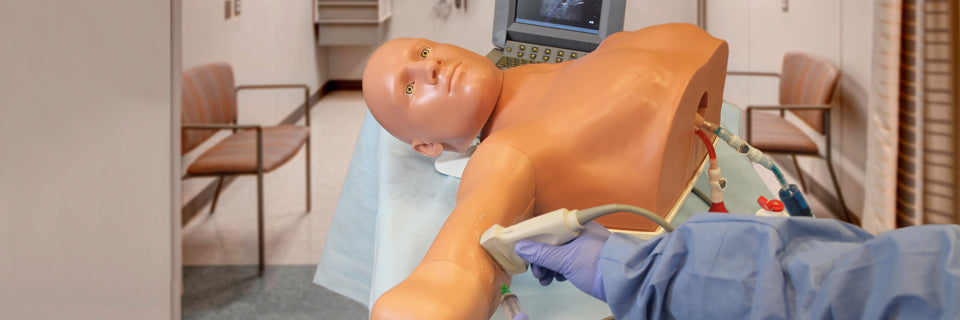
Introducing PICCLineMan™, the Newest Patient Safety Superhero Trainer
Seattle, WA— August 30, 2015 —Seattle-based medical simulator manufacturer, Simulab, announces the release of PICCLineMan, an innovative training simulator designed to provide medical students and nurses with a realistic PICC (Peripherally Inserted Central Catheter) line insertion training experience. Central Line infections kill nearly 10,000 hospital patients every year, and this trainer, combined with a clinically-proven curriculum, can dramatically reduce infection risks.
PICCLineMan reinforces all the essential knowledge and skills needed for the safe placement and maintenance of the Central Line Catheter. This includes proper measurement of the catheter to the Superior Vena Cava, realistic ultrasound-guided vein identification, guidewire insertion, and full venous cannulation. It also includes x-rays for verification of technique as well as for visualization of complications.
“We are committed to creating products and training tools that help to improve safe medical procedures throughout the hospital,” states Christopher Toly, CEO. “Researchers have been testing our products thoroughly in a variety of clinical settings. Published research has shown that educational programs using our trainers have significantly reduced adverse events and reduced costs.”
PICCLineMan is an easy-to-use trainer that provides true procedural realism. It comes with three different replaceable tissue options to simulate normal, geriatric or obese patients. Additionally, the tissues provide three venous insertion sites including the Basilic, Cephalic, and the more complex Brachial veins.
“When the standard of care changed to using ultrasound to guide PICC placement, instructors began looking for a realistic, intuitive, and affordable solution,” states Toly. “In response, Simulab worked with leading clinical advisors to create this easy-to-use, best-in-class solution.”
PICCLineMan features include arterial pulsation and vein compression that is visible under real-time ultrasound to assist in properly identifying veins and avoiding insertion errors.
See our full line of PICCLineMan packages here.



